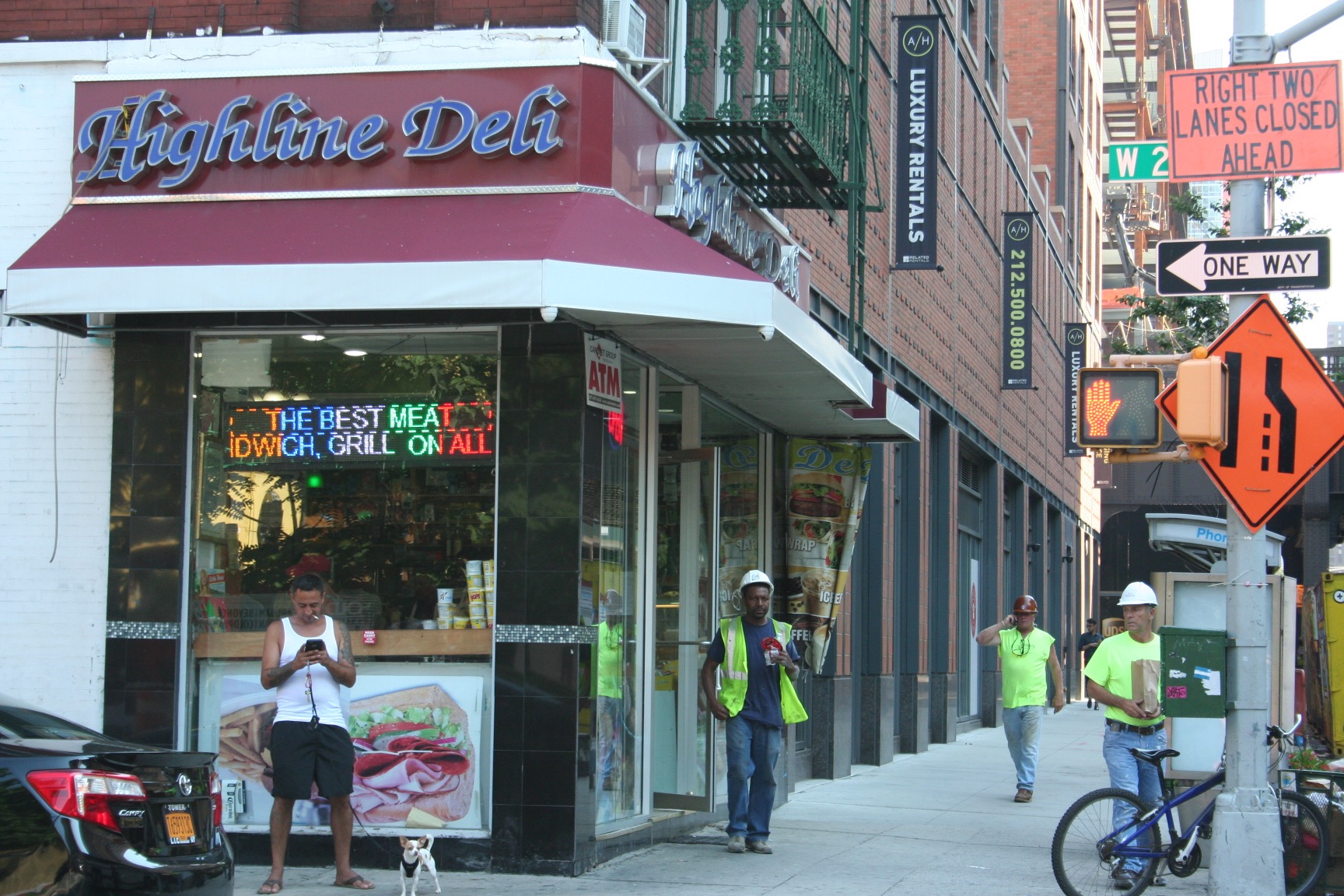
BY YANNIC RACK | On a recent sunny Friday morning, business was very good at the Highline Deli — but most of its customers were not tourists stopping by after walking on the elevated park from which the store takes its name. Instead, a steady stream of workers in brightly colored vests and hard hats filed in and out, picking up snacks and coffee before heading back to work.
Situated at the southeast corner of 10th Ave. and W. 29th St., the Highline Deli is one of several area businesses cashing in on the construction boom, as the Hudson Yards neighborhood begins to rise up from the rail yards west of Penn Station.
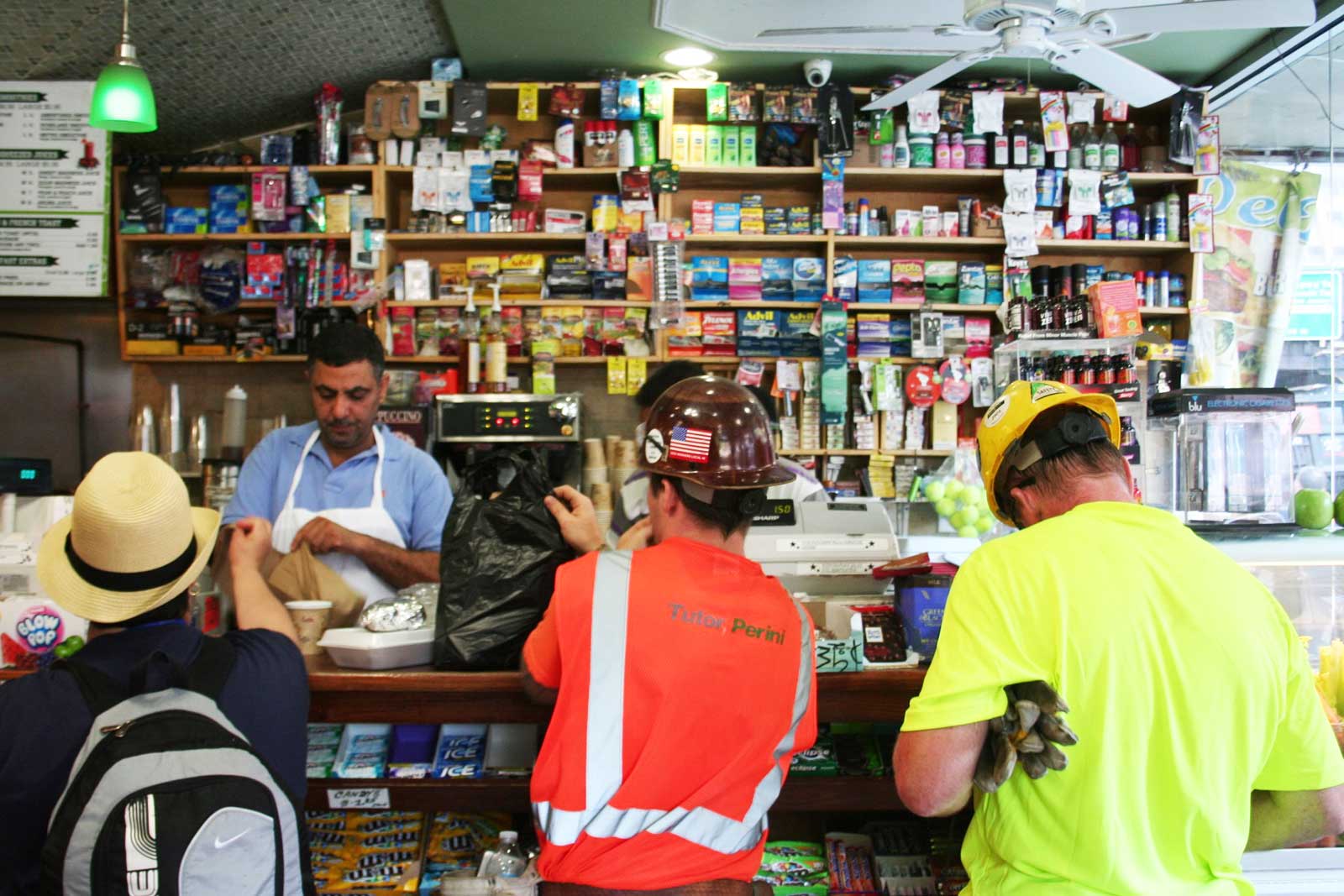
Abdul Ahmed, the manager of the deli, which stands one block south of 10 Hudson Yards, the first of 16 skyscrapers to be built on the site, said that traffic in the store picked up four to five months ago.
“It’s good,” he said, while serving sandwiches and ringing up Red Bull and orange juice, adding that breakfast is his busiest time of the day now. “It’s only in the morning.”
The Hudson Yards redevelopment project, although in the making for nearly a decade, only started its official construction phase at the end of 2012.
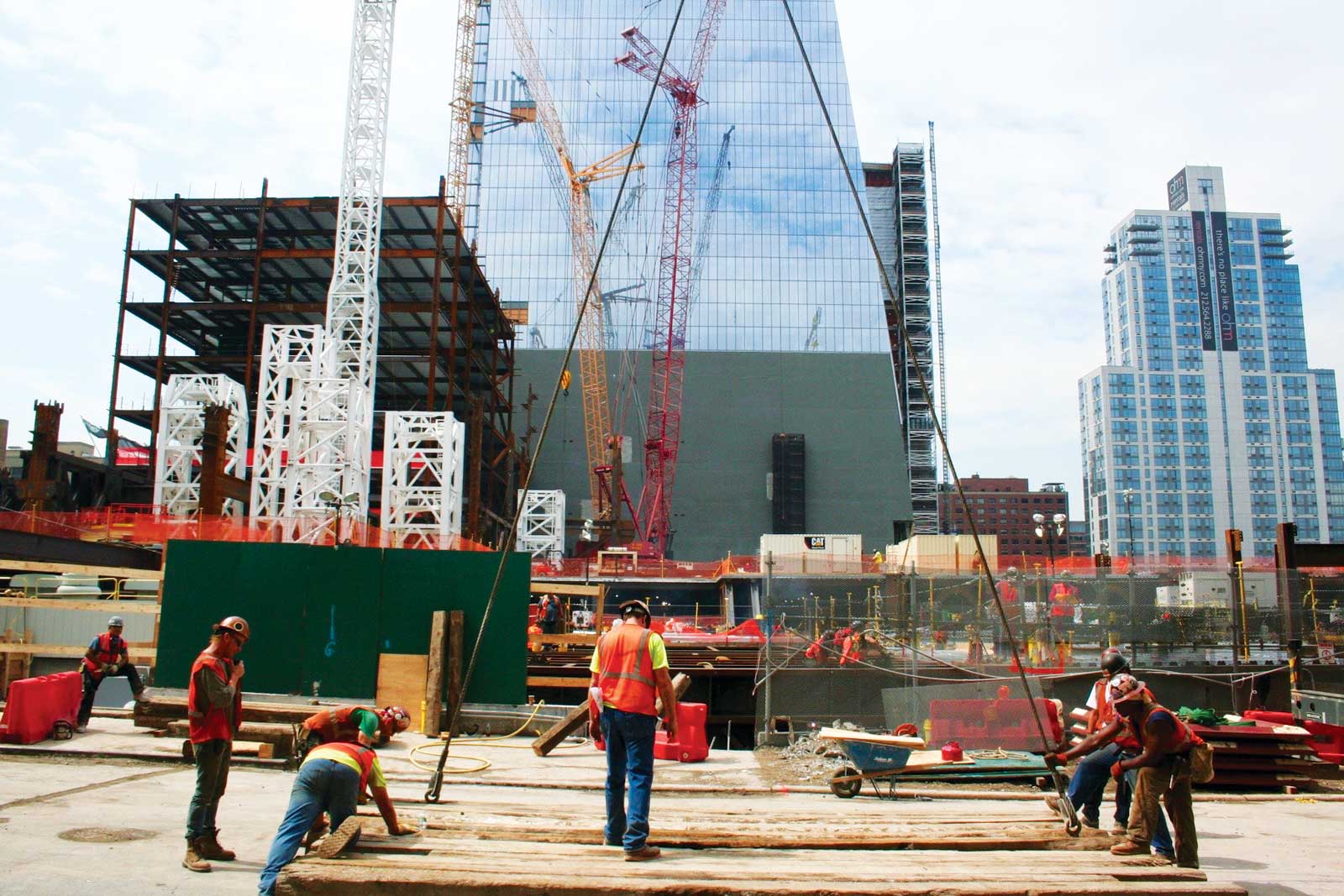
The $20 billion, 28-acre development will eventually encompass 17 million square feet of commercial and residential space, roughly spanning from 10th Ave. to the West Side Highway, and from 30th to 34th Sts. — with the eastern portion, between 10th and 11th Aves., set to open within the next three years. As Chelsea Now noted in our January 29, 2015 Progress Report, completing the project requires two “platforms” built over 30 active Long Island Rail Road tracks, three subsurface Amtrak and New Jersey Transit rail tunnels, and the Gateway tunnel.
To serve residents and attract others to the area, Hudson Yards is also getting a network of parks, the Culture Shed arts center, and — next month, the city assures — a No. 7 subway stop. Over the next decade, hotels and residential complexes will continue to spring up in the area around the rail yards, which are kept in operation throughout the construction. Most notably, Neiman Marcus will establish its sole presence in Manhattan, with a 250,000-square-foot, three-level store.
All this has already brought in approximately 1,000 construction workers who descend on the area every day, and that number is expected to rise to 6,000 in the next few years, according to a spokesperson for Related Companies, which is developing the project together with Oxford Properties.
But so far, not every business in the area has benefitted equally from the influx of laborers.
While some report varying degrees of improved profits over the last few months, at one store there were complaints of a spike in thefts and rude behavior towards residential tenants. Other businesses just don’t see a difference at all.
One block over from the Highline Deli, on W. 30th St., between 10th and 11th Aves., a hot dog stand is set up permanently in front of a staircase leading up to the High Line, which winds its way north, providing the best views of the Hudson Yards construction site.
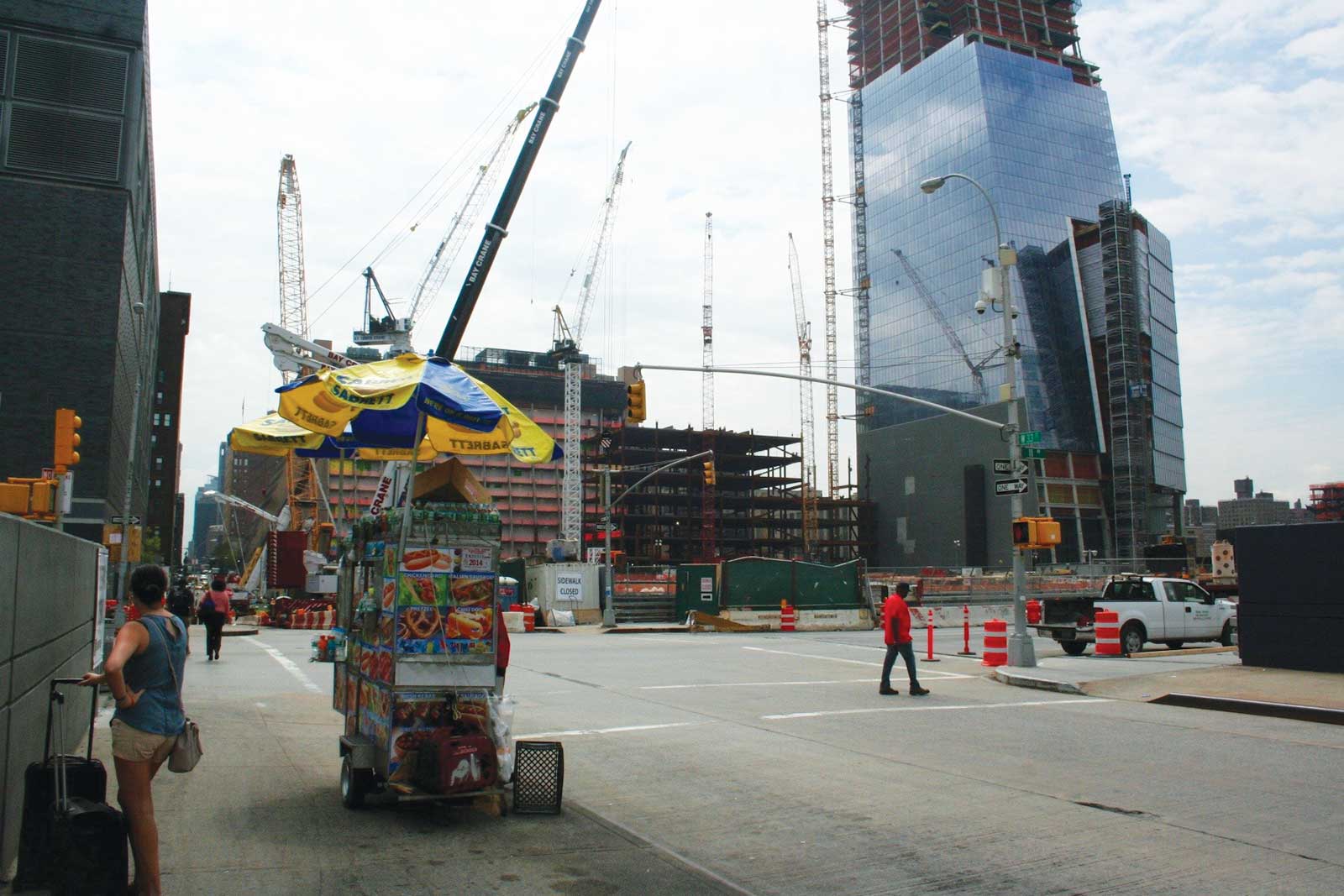
On this Friday, a father was buying hot dogs for himself and his two small sons, but the street was otherwise empty. Overhead, tourists were strolling along the park, cameras at the ready.
Mohamed, who was manning the cart and did not give his last name, said that visitors to the park make up most of his customers, and that business from construction workers was only “so-so.”
This statement proved true for other food carts in the area too.
At one, set up at the northwest corner of 11th Ave. and W. 33rd St., where 11th Ave. bridges over the rail yards to the south, the vendor only spoke Arabic — but it was clear that the nearby workers seldom made the trip across the road.
Instead, the cart’s soft pretzels went to backpackers and New Yorkers waiting to leave town for the weekend via the inter-city bus stop down the street.
A short walk away, Amr Ramadan stood inside a food cart on the southwest corner of W. 34th St. and 10th Ave., next to a McDonald’s parking lot.
He has been at this spot for three months, and said he partly came there because of the many developments around.
“It’s a good area. Saturdays and Sundays are bad, but during the week is good,” he said.
Although the location seemed to be too far removed from the action, Ramadan insisted that he regularly serves workers from Hudson Yards.
“Some construction people come some days, some don’t,” he said. “Not everybody wants to eat chicken rice every day.”
Among the businesses visited for this article, only one reported a bad influence from the construction site.
Alex Rodriguez, the manager of Hamptons Market Place, (at the southeast corner of W. 30th St. and 11th Ave.), didn’t have anything nice to say about the workers who were building 15 Hudson Yards, a residential tower across the street.
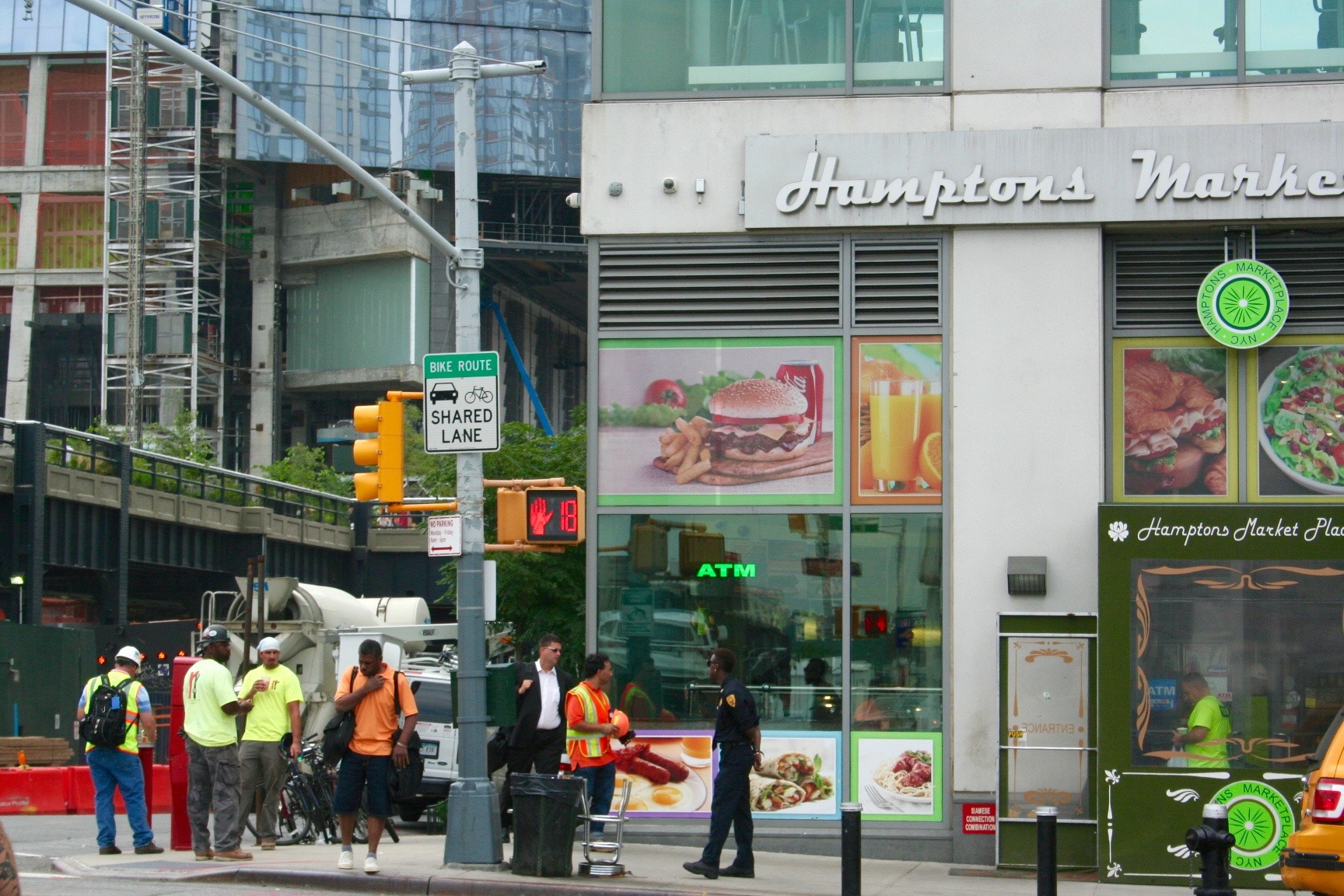
“Nah, the same bullshit,” he responded when asked whether business had picked up. “They’re cheap, those guys. They have a trailer inside the site, so they eat over there. They come a little bit, but not a lot.”
Rodriguez expected to get more business from the workers, but that hope was dashed after the construction company’s trailer started serving food directly on the site, cutting him out.
“It doesn’t make any sense,” he said, adding that the trailer moves up to whichever story of the building the crew is working on at the moment.
“This company is a shit company. A lot of other construction sites, they don’t have this. It’s no good for the neighborhood. They don’t want to give you no business for the neighborhood.”
A spokesperson for Related Companies said on Aug. 3 that the site is equipped with a small trailer that serves only a limited number of meals a day.
Rodriguez also added that he had to deal with more thefts than usual since the workers moved in, and sometimes even caught them helping themselves to items from the store.
“They come over here, and they’re a bunch of thieves. They steal. You’d be surprised. But what do you expect from them?” he asked.
The Market Place is housed on the ground floor of the Ohm, a 34-story tower of luxury apartments that bills itself as “West Chelsea’s best rental.”
Kevin Fennell, a private security officer who was patrolling the sidewalk in front of the building, said he was hired by the building’s management three months ago to keep workers away from that side of the street.
“I’m here to stop them from sitting around the border,” he said. “There are a lot of them. Once they have a break, they sit everywhere.
“Sometimes they’re obnoxious because they sit around the building, they try to talk to the females and they’re rude,” he added.
The building’s owners declined to comment on either of these issues via email — but a spokesperson for Related refuted the claims made by both Rodriguez and Fennell.
“The large influx of developments in the entire Hudson Yards neighborhood has created hundreds of jobs, and the local businesses have experienced a tangible and positive economic impact from all of the workers going to their establishments,” she said.
“The second point is that we have a very open and direct relationship with the ownership of the Ohm, and this is the first we are hearing of any issues. We’ve also not received any reports of criminal behavior or other activities. And we hold our workers to the highest standards.”
The Market Place was the only one in the area complaining of bad behavior among the workers, and the general consensus was that business has improved, albeit in only a small radius around the construction site.
There are some businesses that even moved into the area expressly to serve those who are building what will become a new neighborhood.
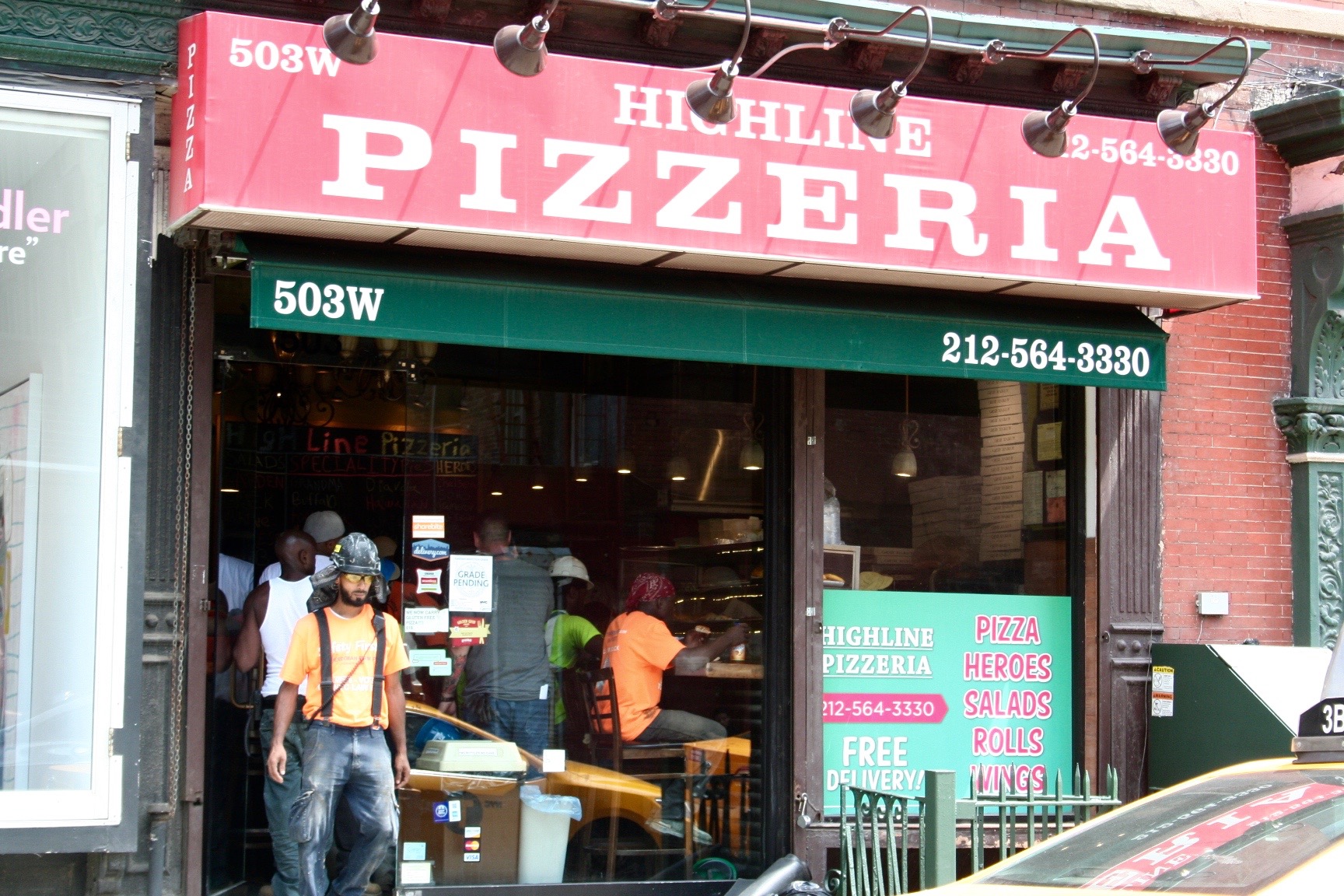
Scott Walker opened his Highline Pizzeria on W. 28th St. three years ago, with an eye on the workers that he knew would move in soon.
“My father’s an electrical contractor, so we knew ten years ago that things were about to explode. That’s why I put it here,” he said.
The small shop, located right by 10th Ave., one block south of the Highline Deli, was bursting at the seams at lunchtime.
The clientele was exclusively made up of burly men in hard hats, some talking in Spanish while eating their slices of pepperoni and cheese at the counter, but most of them grabbing some to go. Many of them were wearing T-shirts sporting the Hudson Yards logo on the back.
“Oh, it’s exploded,” Walker said, in a rare break from shouting orders and dishing out pizza. “And this is a slow day.”
He said he caters to up to 300 workers from Hudson Yards alone every day, not counting the ones from other construction projects nearby.
“Every one of these guys is from there. Hudson Yards, Hudson Yards, Hudson Yards,” he said, pointing out the customers waiting in line.
Walker keeps up-to-date with the progress of the construction, and confidently lists the stores that have signed up to move into Hudson Yards’ commercial spaces.
“They’re getting another six hundred guys, any day now, just for ten floors of Coach. Then there’s another four hundred coming for L’Oreal,” he said, adding that business increased by a whopping 300 percent after his first year.
The developers generously estimate that, along with the residential, commercial and office tenants moving in, the amenities at Hudson Yards will attract 24 million visitors a year to Manhattan’s West Side once the neighborhood is up and running.
It is also expected that Hudson Yards and its 100-plus shops will generate around $3 billion in sales per year, which raises hopes that some of that turnover will trickle down to businesses in Chelsea and Hell’s Kitchen too.
“Hopefully it will affect them well economically, the same way that the High Line affected them,” said Robert Benfatto, the director of the Hudson Yards / Hell’s Kitchen Alliance, a business improvement district (BID) for the area.
Benfatto, the former district manager for Community Board 4, said they have started doing outreach among local shops and restaurants, but are still mainly focused on the opening of the Hudson Park and Boulevard, a six-block long greenway between 10th and 11th Aves. where the 7 train extension will be.
“We’ve started [doing outreach]. We had a meeting, and we’ve walked around introducing ourselves. It’s a slow process. A lot of the businesses, they don’t necessarily know what a BID is, and when you first go in, their immediate thought is that you’re one of those people who always walk in, looking to sell them something,” he said.
Eventually, the Alliance hopes to partner with local businesses on advertising and marketing, and it also plans a greenmarket and a kiosk for Hudson Park.
“A lot will change once the train opens up,” Benfatto said.
Walker, like all of the business owners and managers mentioned above, also looks forward to when the neighborhood is finally finished. Construction across the eastern yard is expected to be completed by 2018.
Nearby, on 10th Ave., between W. 28th and W. 29th Sts., the Greek restaurant Death Ave opened last December. Its owner, Michael Tzezailidis, told Chelsea Now in February that he picked the location for its proximity to Hudson Yards.
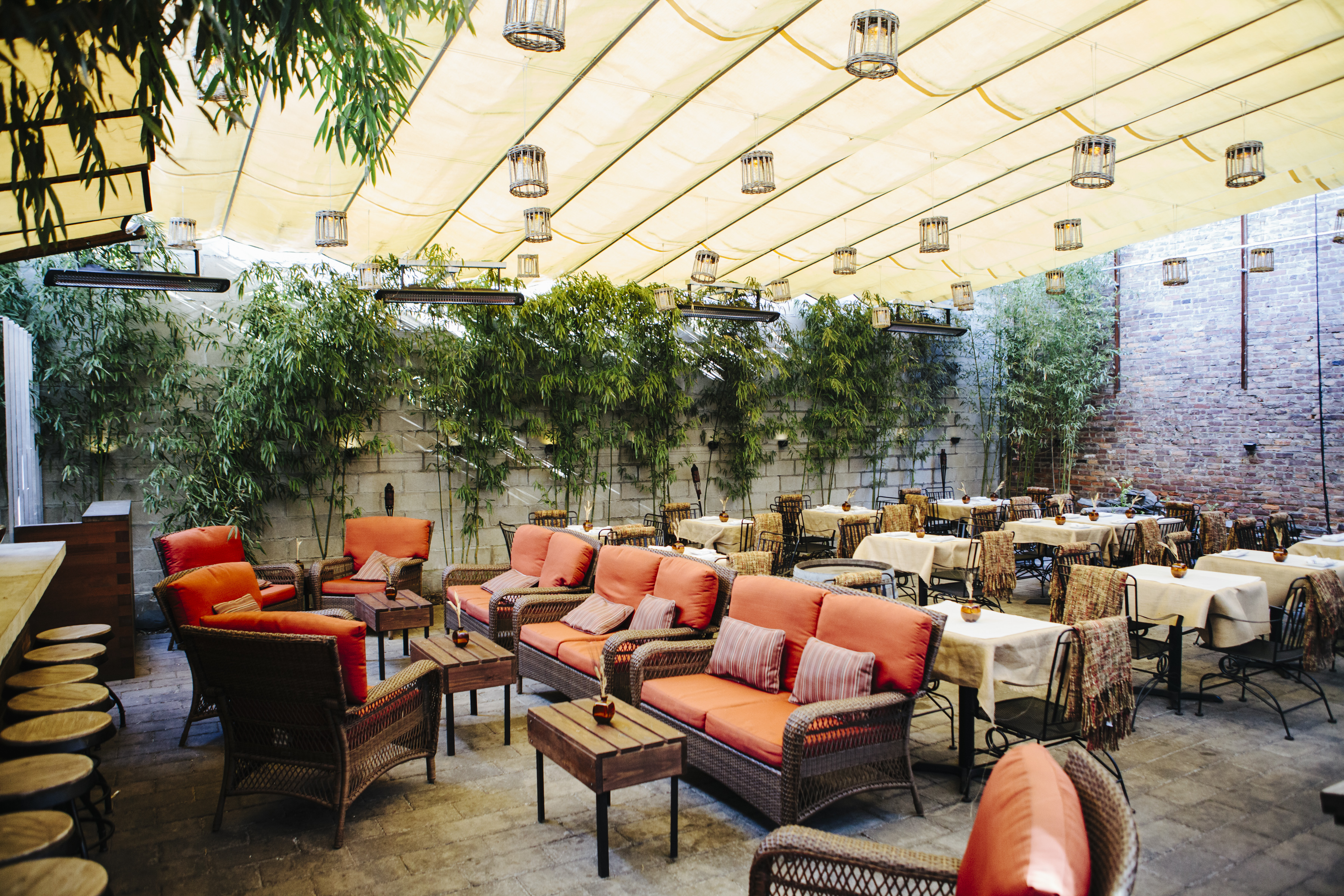
And recently, near Highline Pizzeria, hundreds of apartments have opened up in the Avalon West Chelsea, at 282 11th Ave. (btw. W. 28th & W. 29th Sts.), one of the developments in the area not directly related to the Hudson Yards project.
Walker already sees some of his business, especially later in the day and in the evenings, shifting toward those residents.
He recently extended his lease and is confident that, as construction on Hudson Yards progresses, the workers at his shop will soon be replaced by tenants and tourists.
“I’ll probably be here another twenty years, at least,” he said.

















